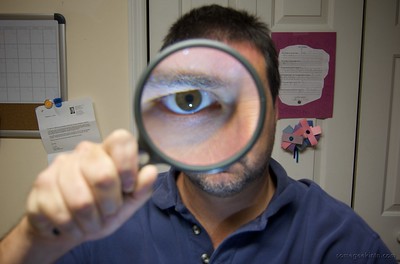Archive for October, 2022
Radical Cost Reduction and Reinvented Supply Chains
 As geopolitical pressures rise, some countries that supply the parts that make up your products may become nonviable. What if there was a way to reinvent the supply chain and move it to more stable regions? And what if there was a way to guard against the use of child labor in the parts that make up your product? And what if there was a way to shorten your supply chain so it could respond faster? And what if there was a way to eliminate environmentally irresponsible materials from your supply chain?
As geopolitical pressures rise, some countries that supply the parts that make up your products may become nonviable. What if there was a way to reinvent the supply chain and move it to more stable regions? And what if there was a way to guard against the use of child labor in the parts that make up your product? And what if there was a way to shorten your supply chain so it could respond faster? And what if there was a way to eliminate environmentally irresponsible materials from your supply chain?
Our supply chains source parts from countries that are less than stable because the cost of the parts made in those countries is low. And child labor can creep into our supply chains because the cost of the parts made with child labor is low. And our supply chains are long because the countries that make parts with the lowest costs are far away. And our supply chains use environmentally irresponsible materials because those materials reduce the cost of the parts.
The thing with the supply chains is that the parts themselves govern the manufacturing processes and materials that can be used, they dictate the factories that can be used and they define the cost. Moving the same old parts to other regions of the world will do little more than increase the price of the parts. If we want to radically reduce cost and reinvent the supply chain, we’ve got to reinvent the parts.
There are methods that can achieve radical cost reduction and reinvent the supply chain, but they are little known. The heart of one such method is a functional model that fully describes all functional elements of the system and how they interact. After the model is complete, there is a straightforward, understandable, agreed-upon definition of how the product functions which the team uses to focus the go-forward design work. And to help them further, the method provides guidelines and suggestions to prioritize the work.
I think radical cost reduction and more robust supply chains are essential to a company’s future. And I am confident in the ability of the methods to deliver solid results. But what I don’t know is: Is the need for radical cost reduction strong enough to cause companies to adopt these methods?
“Zen” by g0upil is licensed under CC BY-SA 2.0.
What does work look like?
 What does work look like when you prioritize your happiness?
What does work look like when you prioritize your happiness?
When it’s announced that open positions will not be backfilled to meet the practical realities of a recession, you reduce the scope of your projects and push out their completion dates to match the reduction in resources. And the impact on your career? I don’t know, but the people that work for you and everyone else that knows how the work is done will move mountains for you.
Under the banner of standard work, you are given the same task as the one you just completed. Sure, you can do it efficiently and effectively, but if you do that same work one more time, your brain will fall off. So, instead of doing it yourself, you give the work to a lesser-experienced person who is worthy of investment and help them get the work done. They get to learn new skills and the work is done well because you keep them on the straight and narrow. And you get to be a teacher and create a future leader that the company will need in a couple of years. And the downside? The work takes a little longer, but so what.
What does work look like when you prioritize your health?
When an extra-early meeting is scheduled because everyone’s regular day is already fully booked with meetings, you decline the meeting so you can get the recommended amount of sleep recommended by the health professionals. And the negative consequences to your career progression? Well, that’s a choice for your company.
When you get home from work, you disconnect your phone from the company network so you won’t be distracted by work-related interruptions. Because you separated yourself from work, after dinner is cleaned up you can make a healthy lunch for tomorrow. If there’s some downside risk to your career, find another company to work for.
What does work look like when you prioritize your family?
When an extra-late meeting is scheduled because everyone’s regular day is already fully booked with meetings, you decline the meeting so you can cook dinner and eat with your family. The conversation with the kids is mundane and meaningful and ten years from now they’ll be better for it. And the negative consequences? None, because tomorrow morning you can read the minutes of the meeting.
When you’re on your yearly holiday with your family and your boss calls your cell phone to ask you to come back to work early to deal with an emergency, you don’t answer the call and let it go to voicemail. Then, when you get back to the office after vacation, you listen to the voicemail and check in with your boss. And because you didn’t pick up the call, someone else had greatness thrust upon them and developed into someone who can solve emergencies. Now there are two of you. And the downside? Well, I think that depends on your boss.
“Looking For Clues (188 / 365)” by somegeekintn is licensed under CC BY 2.0.
Three Scenarios for Scaling Up the Work
 Breaking up work into small chunks can be a good way to get things started. Because the scope of each chunk is small, the cost of each chunk is small making it easier to get approval to do the work. The chunk approach also reduces anxiety around the work because if nothing comes from the chunk, it’s not a big deal because the cost of the work is so low. It’s a good way to get started, and it’s a good way to do a series of small chunks that build on each other. But what happens when the chunks are successful and it’s time to scale up the investment by a factor of several hundred thousand or a million?
Breaking up work into small chunks can be a good way to get things started. Because the scope of each chunk is small, the cost of each chunk is small making it easier to get approval to do the work. The chunk approach also reduces anxiety around the work because if nothing comes from the chunk, it’s not a big deal because the cost of the work is so low. It’s a good way to get started, and it’s a good way to do a series of small chunks that build on each other. But what happens when the chunks are successful and it’s time to scale up the investment by a factor of several hundred thousand or a million?
The scaling scenario. When the early work (the chunks) was defined an agreement in principle was created that said the larger investment would be made in a timely way if the small chunks demonstrated the viability of a whole new offering for your customers. The result of this scenario is a large investment is allocated quickly, resources flow quickly, and the scaling work begins soon after the last chunk is finished. This is the least likely scenario.
The more chunks scenario. When the chunks were defined, everyone was excited that the novel work had actually started and there was no real thought about the resources required to scale it into something meaningful and material. Since the resources needed to scale were not budgeted, the only option to keep things going is to break up the work into another series of small chunks. Though the organization sees this as progress, it’s not. The only thing that can deliver the payout the organization needs is to scale up the work. The follow-on chunks distract the company and let it think there is progress, when, really, there is only delayed scaling.
The scale next year scenario. When the chunks were defined, no one thought about scaling so there was no money in the budget to scale. A plan and cost estimate are created for the scaling work and the package waits to be assessed as part of the annual planning process. And as the waiting happens, the people that did the early work (the chunks) move on to other projects and are not available to do the scaling work even if the work gets funded next year. And because the work is new it requires new infrastructure, new resources, new teams, new thinking, and maybe a new company. All this newness makes the price tag significant and it may require more than one annual planning cycle to justify the expense and start the work.
Scaling a new invention into a full-sized business is difficult and expensive, but if you’re looking to create radical growth, scaling is the easiest and least expensive way to go.
“100 Dollar Bills” by Philip Taylor PT is licensed under CC BY-SA 2.0.
Rediscovering The Power of Getting Together In-Person
 When you spend time with a group in person, you get to know them in ways that can’t be known if you spend time with them using electronic means. When meeting in person, you can tell when someone says something that’s difficult for them. And you can also tell when that difficulty is fake. When using screens, those two situations look the same, but, in person, you know they are different. There’s no way to quantify the value of that type of discernment, but the value borders on pricelessness.
When you spend time with a group in person, you get to know them in ways that can’t be known if you spend time with them using electronic means. When meeting in person, you can tell when someone says something that’s difficult for them. And you can also tell when that difficulty is fake. When using screens, those two situations look the same, but, in person, you know they are different. There’s no way to quantify the value of that type of discernment, but the value borders on pricelessness.
When people know you see them as they really are, they know you care. And they like that because they know your discernment requires significant effort. Sure, at first, they may be uncomfortable because you can see them as they are, but, over time, they learn that your ability to see them as they are is a sign of their importance. And there’s no need to call this out explicitly because all that learning comes as a natural byproduct of meeting in person.
And the game changes when people know you see them (and accept them) for who they are. The breadth of topics that can be discussed becomes almost limitless. Personal stories flow; family experiences bubble to the surface; misunderstandings are discussed openly; vulnerable thoughts and feelings are safely expressed; and trust deepens.
I think we’ve forgotten the power of working together in person, but it only takes three days of in-person project work to help us remember. If you have an important project deliverable, I suggest you organize a three-day, in-person event where a small group gets together to work on the deliverable. Create a formal agenda where it’s 50% work and 50% not work. (I’ve found that the 50% not work is the most valuable and productive.) Make it focused and make it personal. Cook food for the group. Go off-site to a museum. Go for a hike. And work hard. But, most importantly, spend time together.
Things will be different after the three-day event. Sure, you’ll make progress on your project deliverable, but, more importantly, you’ll create the conditions for the group to do amazing work over the next five years.
“Elephants Amboseli” by blieusong is licensed under CC BY-SA 2.0.
 Mike Shipulski
Mike Shipulski